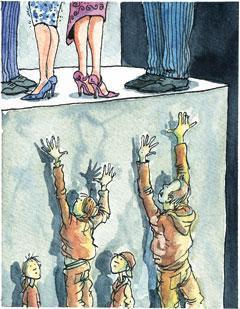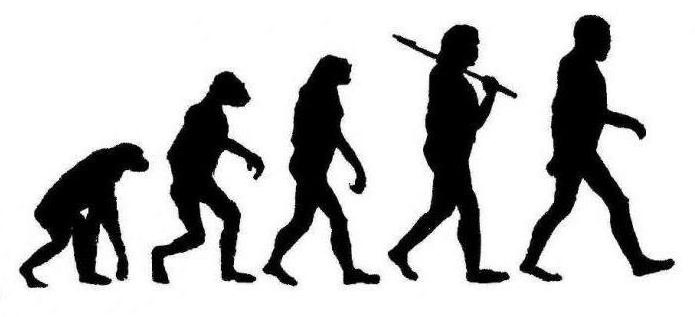The general concept of social mobility is associated with a change in the status of an individual or a certain social group, after which he changes his current position and place in the social structure, he has other roles, characteristics in stratification change. The social system is complex in its multi-level. Stratification describes the rank structure, patterns and features of existence in development, hence the division of this movement into types of social mobility.

Status
A person who once received one or another status does not remain its bearer until the end of his life. A child, for example, grows up, replacing another set of statuses related to growing up. So society is constantly on the move, evolving, changing the social structure, losing some people and gaining others, but certain social roles are still played, since the status positions remain filled. Any transition of an individual or an object created or modified by human activity to another position, which has been led by channels of social mobility, falls under this definition.
The main elements of the social structure - individuals - are also in constant motion. To describe the movement of the individual in the social structure, the concept of "social mobility of society" is used. This theory appeared in sociological science in 1927, its author was Pitirim Sorokin, who described the factors of social mobility. The process under consideration causes a constant redistribution within the boundaries of the social structure of individual individuals in accordance with the existing principles of social differentiation.

Social system
In a single social system, there are many subsystems that have a clearly fixed or traditionally fixed set of requirements for all individuals seeking to acquire one or another status. It is always the one who succeeds who meets all these requirements to the greatest degree. Examples of social mobility can be found at every step. So, a university is a powerful social subsystem.
Students studying there must learn the curriculum, and during the session, a check will be made to see how the development has been effective. Naturally, those individuals who do not satisfy the examiners with a minimum level of knowledge will not be able to continue their studies. But those who have learned the material better than others receive additional channels of social mobility, that is, chances to use education effectively - in graduate school, in science, in employment. And the rule is that it acts always and everywhere: the fulfillment of a social role changes the situation in society for the better.

Types of social mobility. Current state of affairs
Modern sociology subdivides the types and types of social mobility, designed to most fully describe the whole gamut of social movements. First of all, it is necessary to say about two types - vertical and horizontal mobility. If the transition from one social position to another has taken place, but the level has not changed, this is horizontal social mobility. This may be a change of denomination or residence. Horizontal examples of social mobility are the most numerous.
If with the transition to another social status the level of social stratification is changing, that is, social status is getting better or worse, then this movement belongs to the second type. Vertical social mobility, in turn, is divided into two subtypes: ascending and descending. The stratification ladder of the social system, like any other ladder, implies a movement both up and down.
Vertical examples of social mobility: up - improvement of status (regular military rank, diploma, etc.), down - deterioration (loss of job, expulsion from a university, etc.), that is, that which implies an increase or decrease opportunities for further movement and social growth.

Individual and group
In addition, vertical social mobility can be group and individual. The latter occurs when a separate member of the society changes his social position when the old status niche (stratum) is abandoned and a new state is found. Here, the level of education, social background, mental and physical abilities, place of residence, external data, specific actions - a profitable marriage, for example, a criminal offense or manifestation of heroism, play a role.
Group mobility most often occurs when the stratification system of this society changes, when the social significance of even the largest social groups undergoes changes. These types of social mobility are authorized by the state or are the result of a targeted policy. Organized mobility can be distinguished here (moreover, the consent of people does not matter - recruitment in building groups or volunteer ones, the economic crisis, the reduction of rights and freedoms in certain sections of society, the resettlement of peoples or ethnic groups, etc.)

Structure
Structural mobility is also of great importance in defining a concept. The social system is undergoing structural changes, which is not so rare. Industrialization, for example, which usually requires cheap labor, which restructures the entire social structure in order to recruit this labor force.
Horizontal and vertical social activity can occur in a group at the same time during a change of political regime or state system, economic collapse or take-off, during any social revolution, during foreign occupation, invasion, during any military conflicts - both civil and interstate.
Inside generation
The science of sociology distinguishes between intergenerational social mobility and intergenerational. This is best seen with examples. Intra-generational, that is, intergenerational social mobility implies shifts in the status distribution in a certain age group, in a generation, and tracks the overall dynamics of the distribution of this group within the social system.
For example, monitoring is conducted regarding the possibilities of obtaining a higher education, free medical care and many other relevant social processes. Recognizing the most common features of the social movement in a given generation, one can already evaluate with a degree of objectivity the social development of an individual from this age group. The whole path of a person in social life-long development can be called a social career.

Intergenerational Mobility
The analysis of changes in social status in different generations of groups is also carried out, which allows us to see the patterns of long-term processes in society, to establish the characteristic factors of social mobility in the implementation of a social career, considering various social groups and communities.
For example, which segments of the population are subject to more upward social mobility, and which are more downward, can be found through extensive monitoring, which will answer similar questions and thus reveal ways to stimulate specific social groups.Many other factors are also defined: features of a given social environment, whether or not there is a desire for social growth, etc.
Game by the rules
In a stable social structure, the movement of individuals occurs according to plan and rules. In unstable, when the social system is shaken, - disorganized, spontaneous, chaotic. In any case, to change the status, an individual must enlist the support of a social environment.
If an applicant wants to enter Moscow State University, MGIMO or Moscow Engineering Physics Institute, in order to acquire student status, he needs to have, besides the desire, a whole complex of certain personal qualities and meet the requirements for all students of these educational institutions. That is, the applicant must confirm his compliance, for example, with entrance examinations or financial independence. In case of compliance, he will receive the desired status.

Social institutions
Modern society is a complex and highly institutionalized structure. Most of the social movements are associated with certain social institutions, many statuses outside the framework of specific institutions do not matter at all. For example, in isolation from education, teacher and student statuses do not exist, and there are no patient and doctor statuses outside the healthcare institute. This means that it is social institutions that create the social space where the largest part of status changes takes place. These spaces (channels of social mobility) are structures, methods, mechanisms used for status movement.
The main driving forces are government bodies, political parties, economic structures, public organizations, the church, the army, professional and labor unions and organizations, family and clan ties, and the education system. In turn, for a given period of time, the social structure feels a significant influence on the part of organized crime, which has its own mobile system, which also influences official institutions through, for example, corruption.
Totality of influence
Channels of social mobility - an integrated system that complements, restricts, stabilizes all components of the social structure, in which the institutional and legal procedures for the movement of each individual are elementary social selection, where not only a long and tight acquaintance with certain rules and traditions takes place, but also confirmation by the individual their loyalty, obtaining the approval of the dominant persons.
Here you can still talk a lot about the formal need for conformity and subjectivity in assessing all the individual’s efforts on the part of those on whom the social transfer of the status of the individual directly depends.
